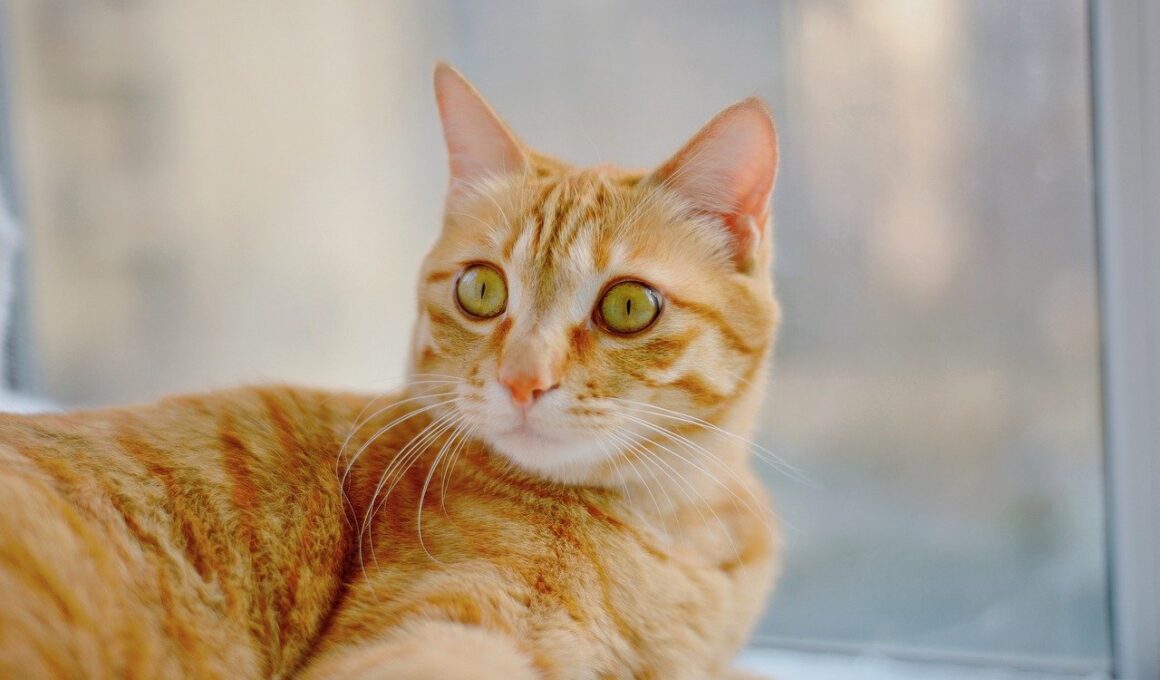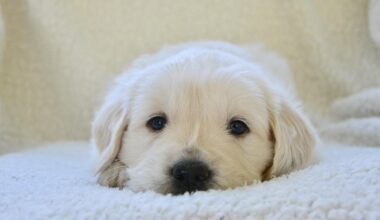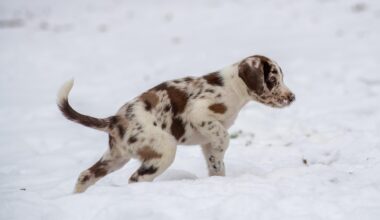Incorporating Environment to Add Context to Cat Photography
Cat photography can become a rich storytelling medium by creatively utilizing the environment in which the cat is situated. To start, consider the surroundings when you capture your feline friend in action. Is there a particular setting that showcases their personality or interactions? For example, a playful kitten amid colorful fall leaves can add vibrancy to your images. Bringing in elements like greenery, textures, or weather elements creates emotional depth. Look for unique features that characterize a space, such as flower pots, sunny window sills, or cozy corners, which effectively highlight the cat’s curiosity and nature. Furthermore, including props associated with your cat’s habits can also enhance the story you are depicting. Think about their favorite toys or resting spots to add context. Diverse lighting conditions play a pivotal role as well; warm golden hour light can elevate the emotion and feel of each shot. The interplay of light and shadow can produce captivating images alongside your furry model. Ultimately, the environment enriches the narrative, making your cat photography distinct and memorable. It brings out the majestic or whimsical side of their characters, communicating with viewers effortlessly.
As you delve deeper into creating cat photo stories, consider the backgrounds that resonate with the personality of your cat. For instance, an adventurous cat fittingly portrayed against a vibrant urban backdrop could depict its playful spirit. Alternatively, a shy cat amidst a tranquil garden can evoke a sense of serenity and comfort. Captivating shots often arise from areas that reflect these double meanings. Finding locations that emphasize your cat’s traits can create brooding or joyous narratives, carrying significance beyond just the image itself. To enhance this storytelling aspect, think about the arrangement of objects within the frame as well. Carefully positioned elements in the environment can draw attention to your cat, engaging the viewer with a more dynamic composition. For example, if a cat is perched on a sunny rooftop, the view of expansive cityscapes can present an urban cat conqueror feeling. Environmental storytelling thus becomes a crucial aspect; when thoughtfully executed, it can portray emotions and interactions between the cat and their habitat. Furthermore, exploring various environments promotes variety within your portfolio, inviting fresh perspectives on cat photography.
Understanding the Importance of Natural Elements
Natural elements can play a significant role in enhancing your cat’s story through photography. Using features like flowers, leaves, or rocky paths can produce a connection between the cat and nature, emphasizing their instinctive behaviors. For example, a cat exploring wildflowers can evoke feelings of freedom and adventure. Capturing your feline friend amid seasonal changes also presents unique storytelling opportunities. Spring blossoms, summer sunlight, autumn leaves, or winter snow can serve as stunning backdrops. Each season brings its unique tone, influencing the visual mood and narrative aspect surrounding your cat. Play with composition to integrate natural elements effectively, such as placing the cat off-center or leading the viewer’s eye through the frame with natural lines. Furthermore, consider the time of day when choosing your shooting environment. The soft light of the golden hour can produce alluring images that highlight your cat’s features against the scenery. Minimalistic backgrounds allow the subject to stand out, while rich, complex environments invite scrutiny beyond the feline. Utilizing these natural elements can amplify your storytelling skills and infuse emotion into the captured moments.
The interaction between your cat and its environment is essential; capturing these moments often results in the most engaging photos. Documenting a cat’s reactions adds layers of meaning to your photography. When your feline engages with its surroundings, it creates a visual narrative that speaks volumes about its personality. For instance, a cat intently watching birds outside a window conveys curiosity and intrigue visually. Similarly, a cat snuggled in a cozy blanket can express warmth and comfort. Hence, anticipating and being ready to capture these spontaneous interactions can lead to captivating stories. Always have your camera accessible, allowing yourself to respond quickly to moments as they happen. Waiting for a cat to leap or curl up can make or break a shot; patience is key when composing these narratives. Pay attention to their behavior and body language since this will help you anticipate fantastic photo opportunities. Additionally, don’t forget to shoot from various angles to uncover interesting perspectives of each scene. Including candid moments reflecting interactions with the environment creates relatable, heartfelt stories that resonate with your audience.
The Role of Contextual Storytelling
Contextual storytelling revolves around establishing a broader narrative, giving viewers insights into both your cat’s life and the environment. Each photograph can become a chapter in a larger story, where the environment plays a vital role. Introducing objects associated with the cat’s daily activities or interests helps contextualize photographs. For example, including a favorite scratching post or a beloved sunny spot invites viewers into your cat’s world, fostering connection. Visually narrating daily routines can create a rhythm in your photo stories, showcasing the cat’s life cycle. Highlight varying activities—exploring, playing, resting, or interacting with family members gives depth to the character and personality of the cat. Incorporate elements like human interactions which can elicit emotional responses from viewers. A mother cat nursing her kittens among flowering plants tells a poignant story of nurturing and nature’s balance. Developing a unique theme or motif can bring coherence throughout your collection of photographs; these threads unify each tale into an engaging narrative. Ultimately, utilizing contextual storytelling engenders empathy and resonance with your audience by encouraging them to invest emotionally in each photograph.
When composing cat photographs, technical aspects also influence the storytelling effectiveness. Understanding camera settings enables you to enhance the connection between cat and environment through realistic portrayals. A proper focus brings depth to the images while allowing the cat’s features to shine. Experimenting with depth of field allows selective focus on certain elements, isolating your feline in busy environments while still adding context. For more dynamic shots, utilize burst mode to capture movement, thereby showcasing playfulness and energy. Adjusting the aperture settings can dramatically influence the overall effect, creating dreamlike backgrounds against well-defined subjects. Always be mindful of the composition. Techniques such as the Rule of Thirds can elevate image interest by strategically placing your cat at focal points in accordance with surrounding elements. Additionally, be aware of the ambient light and how it interacts with your subject; shadows and highlights can alter mood and emotion significantly. Mastering technical aspects along with being mindful of environmental context can forge a powerful bond between the photograph and the viewer, resulting in impactful storytelling through every captured moment.
Editing for Enhanced Storytelling
Post-processing is particularly important to refine the overall narrative presented through your cat photography. While capturing stunning images is essential, enhancing them via editing software can further amplify their storytelling potential. Basic adjustments like exposure, contrast, and saturation modulations can dramatically improve mood and clarity. This allows the environment to resonate more with the shot’s intended story. Furthermore, cropping can refine the focus, eliminating distractions that might detract from the cat or the backdrop. Utilize tools that emphasize colors already present within the image, ensuring the environment complements your subject harmoniously. Overlaying textures or creative filters can transport your viewer to a particular feeling, setting a distinct tone. However, remember to strive for natural aesthetics, steering clear of excessive alteration, maintaining authenticity. Highlighting unique features in the cat’s environment can elicit emotions that mirror experiences common among the viewers. Finally, documenting your editing process can provide insights into successful techniques for future projects. Embracing the editing phase enriches your overall cat photography journey, allowing for more profound connections through visual storytelling.
In summary, building compelling cat photo stories requires thoughtful consideration of environmental context. From capturing spontaneous moments to understanding your cat’s character, while manipulating composition and editing techniques, the final product becomes a multi-dimensional narrative. Each photograph encapsulates emotions, inviting viewers to explore deeper connections to their own feline companions. Establishing the environment plays a major role; the uniqueness of surroundings enhances storytelling. Through cultural, emotional, or contextual significance, your photography can successfully communicate the essence of each feline story. Ultimately, integrating the environment into your cat photography not only showcases their natural behavior but also provides rich layers and meanings connected to the captured moment. Encouraging creativity and exploration of various settings can lead to distinct pictures within your portfolio, fostering recognition of both the playful and introspective nature of cats. Engaging the viewer invites them into a shared world, where their bonds with cats feel celebrated and understood. The synthesis of technical proficiency and artistic awareness brings forth storytelling finesse that resonates with those who view your work. These cohesive narratives will ensure your cat photography remains memorable and meaningful.


